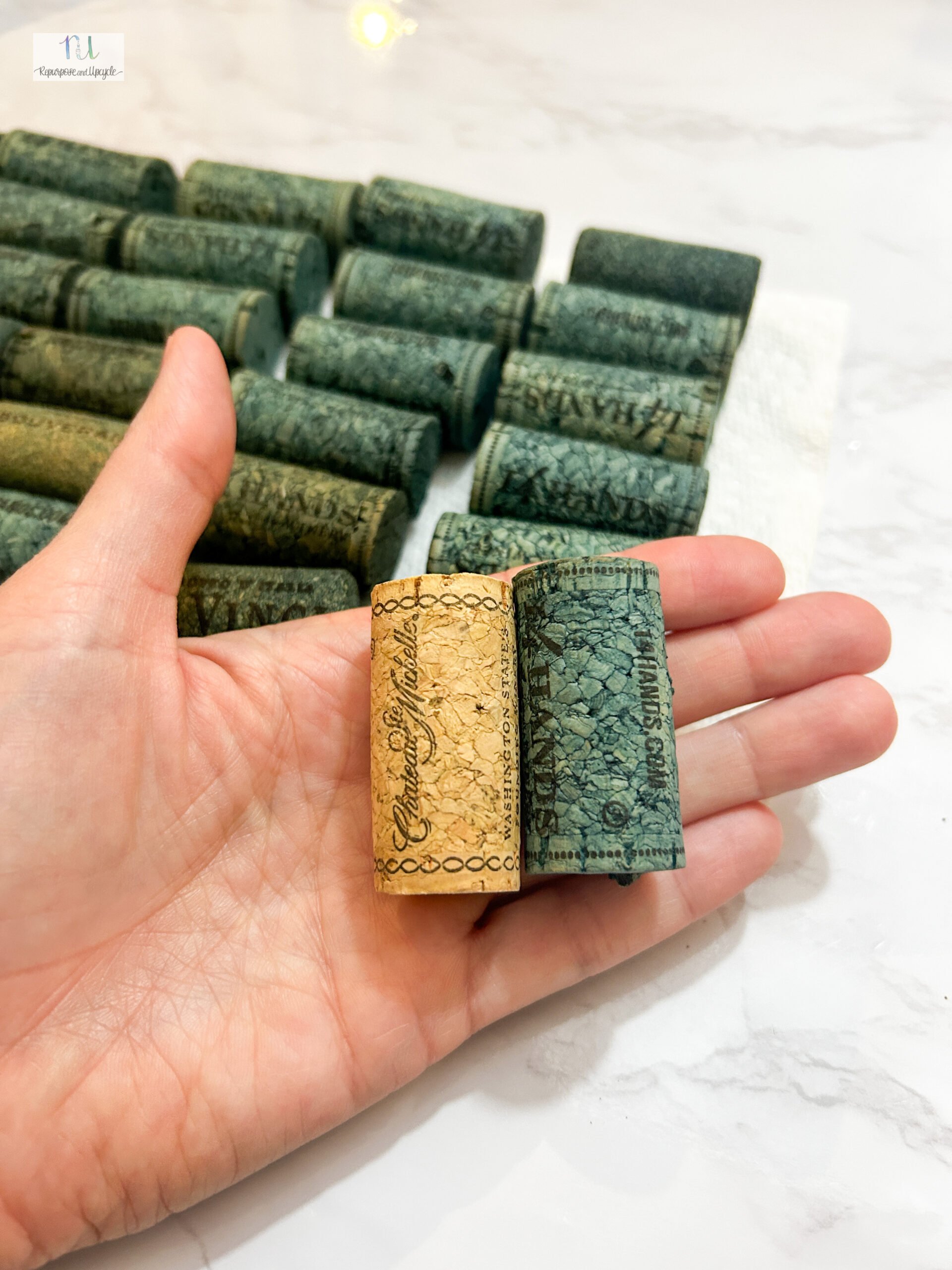Creative DIY table legs are a great way to add a unique touch to any table. Whether you’re looking to create a rustic farmhouse-style table or a sleek modern design, there’s a DIY table leg option for you.
No matter what style you choose, creating your own table legs can be a fun and rewarding project. Not only will you have a one-of-a-kind piece of furniture, but you’ll also have the satisfaction of knowing you created it yourself. So why not try your hand at creating some creative DIY table legs for your next project?
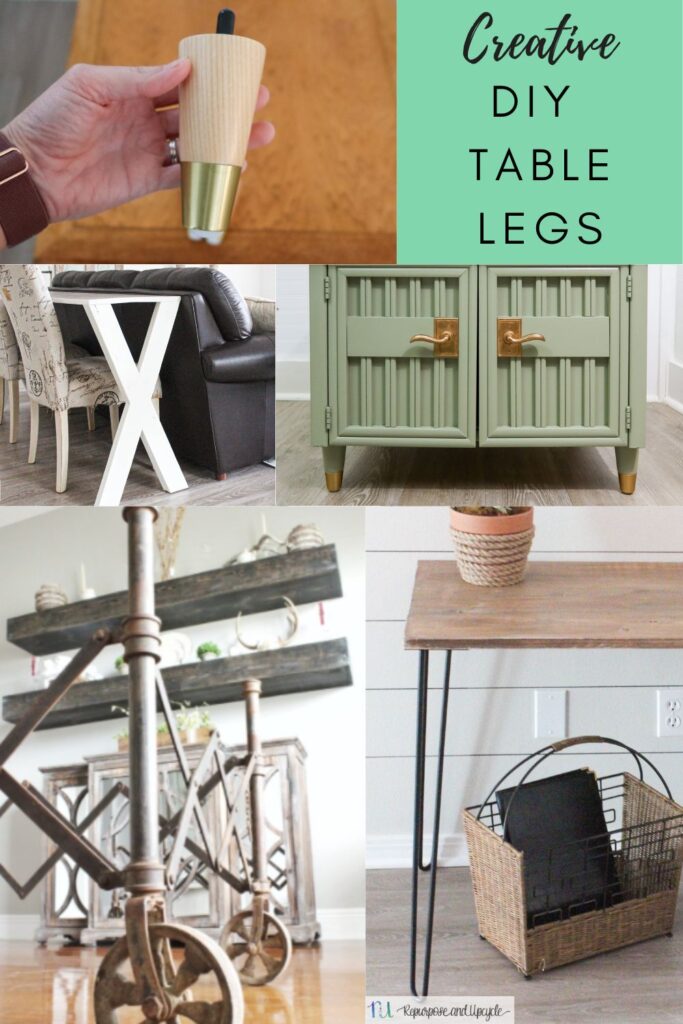
Different types of DIY Table Legs
DIY table legs are a great way to add a unique touch to your furniture. Some popular options include wood, metal, and PVC pipe. Each material has its own advantages and disadvantages, so it’s important to choose the right one for your project.
Wooden table legs are a classic choice that can add warmth and character to your furniture. They can be easily customized with paint or stain to match your decor. Just know they may not be as durable as metal or PVC legs.
Metal table legs are strong and durable, making them a great choice for heavy or outdoor furniture. They can also be easily painted or powder-coated to match your decor. However, they may be more expensive than other materials.
PVC pipe is a lightweight and affordable option that can be easily cut and assembled. It’s also weather-resistant, making it a good choice for outdoor furniture too.
Disclosure; this post contains affiliate links. As an Amazon Associate I earn from qualifying purchases. This disclosure statement refers to the rest of the Amazon links in this post.
Materials for DIY Table Legs
Wood
Wood is a popular choice for DIY table legs due to its durability and versatility. It can be easily shaped into various designs and can be stained or painted to match the table’s style. Some common types of wood used for table legs include oak, pine, and maple.

I previously used a set of table legs I purchased from Amazon to give an end table a makeover. I removed the chunky base and added these store bought wood legs and it elevated the furniture piece! Store bought wood legs are a great option with endless opportunities for your specific table. Also don’t overlook the option of removing legs from one piece of furniture and reusing them on another.
You can see below where a simple set of store bought wood furniture legs really elevated the look of this end table.

Metal
Metal is another popular material for DIY table legs. It is strong and durable, making it ideal for supporting heavy tables. Metal legs can be made from various materials, such as steel, iron, and aluminum, and can be finished with a variety of coatings, such as powder coating or chrome plating.
Hairpin legs have become very popular to use over the last few years. I recently made my own DIY table with hairpin legs.
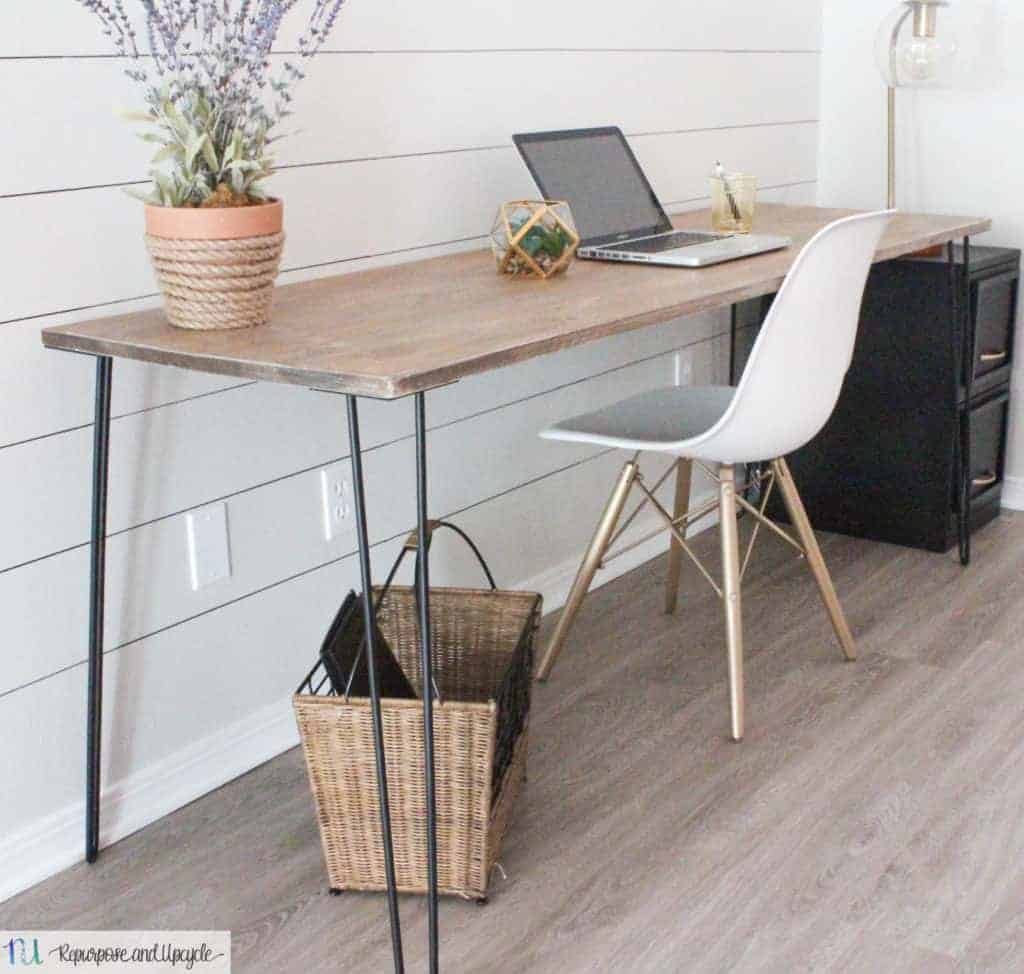
This might be an unpopular opinion, but don’t discount the idea of repurposing something unusual for table legs.
In the past, I used an old metal vintage casket carrier for my dining room table legs. Yep, what used to be used to carry bodies is now carrying my table top. Needless to say, my husband could only stand looking at that dining table for a few years then we had to remove it, LOL. It was truly a unique design.
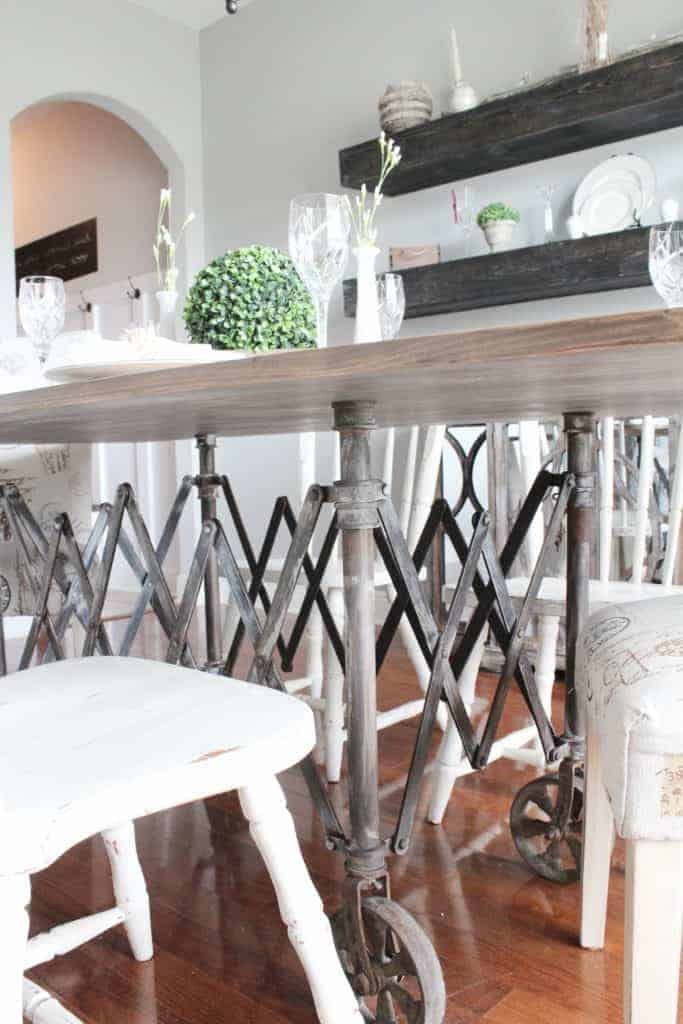
Plastic
Plastic is a lightweight and affordable material that can be used for DIY table legs. It is easy to work with and can be molded into various shapes and sizes. Plastic legs are also available in a variety of colors, making it easy to match them to the table’s style. It is normally used for outdoor tables and furniture that will need to withstand moisture. You can easily spray paint the plastic legs to make them fit in with any color scheme. Honestly, this is my least favorite option for table legs due to lack of stability.
That being said, Acrylic plastic legs are a harder plastic material that has become popular in the last few years.
Tools Needed for DIY Table Legs
Power Tools
When it comes to creating your own table legs, power tools can make the process much easier and efficient. Here are some tools you may want to consider using:
Hand Tools
While power tools can be helpful, there are also a number of hand tools that can be used to create DIY table legs. Here are some options:
Creative Ideas for DIY Table Leg Projects
When it comes to creating a unique and personalized table, the furniture legs can make all the difference. Here are some creative ideas for DIY table legs for your new table!
Rustic Style
For a rustic look, consider using reclaimed wood or branches for your table legs. You can also use metal pipes or rods to create an industrial-rustic hybrid look. Check out how I created these X-shaped legs from scrap wood for a DIY behind the couch table.
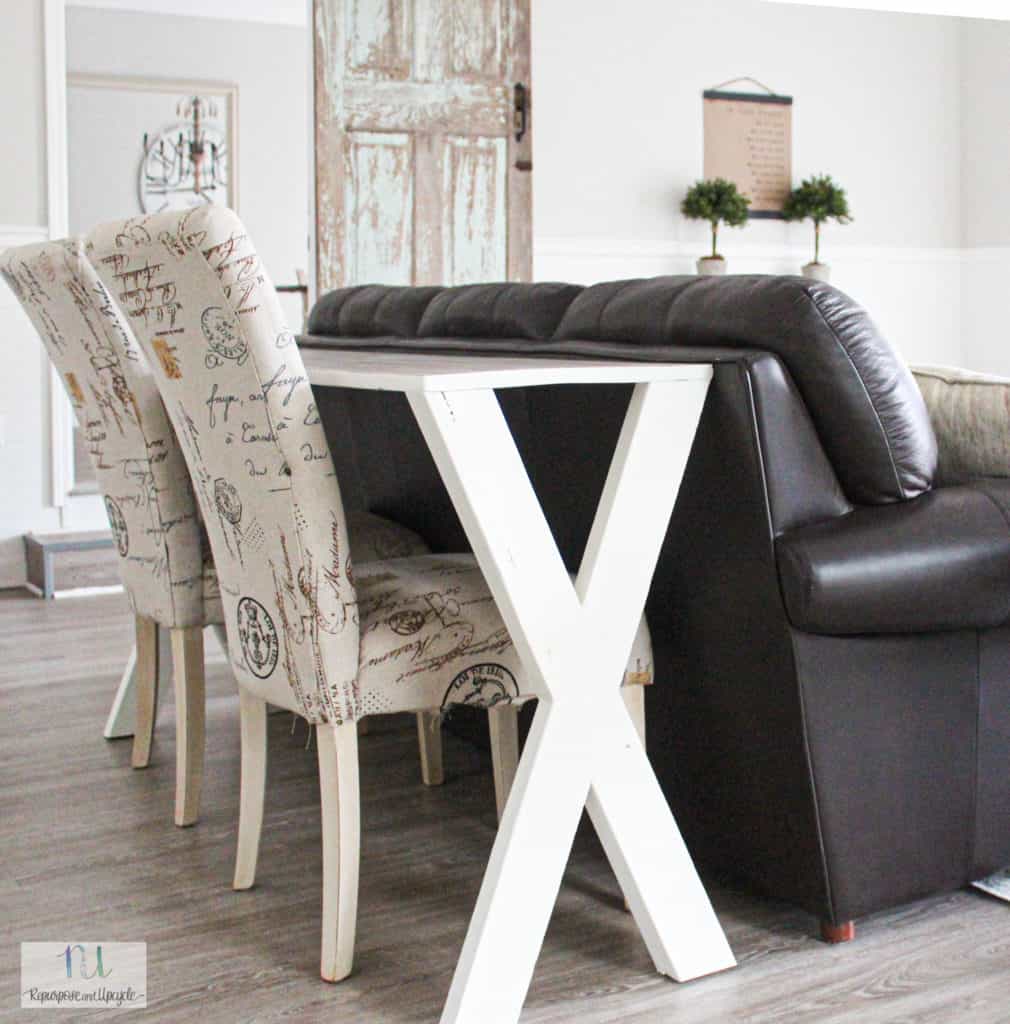
Modern and Industrial Style
For a sleek and modern look, consider using geometric shapes or minimalist designs for your table legs. You can use metal, wood, or even acrylic to create a unique and eye-catching look. Once again, hairpin legs are a great, affordable and simple option.

Vintage Style
Vintage style table legs can be made using salvaged pieces from old furniture or architectural elements. You can also experiment with different finishes, such as distressed or painted wood. Consider reusing vintage furniture legs for your coffee table legs. This will make a great conversation starter.
One more picture below of the casket carrier table base. 🙂

Common Mistakes to Avoid
When it comes to creating DIY table legs, there are a few common mistakes that people make. Here are some things to avoid:
- Not measuring properly: One of the most important things to get right when creating table legs is the measurements. Make sure to measure everything at least twice to avoid any mistakes.
- Using the wrong materials: Using the wrong materials can result in legs that are not strong enough to support the weight of the table. Make sure to research the best materials for your specific project and use high-quality materials.
- Skipping the finishing step: Finishing is an important step in protecting the legs from wear and tear, as well as giving them a polished look. If you are painting the legs, make sure to seal them properly.
- Not testing for stability: Before attaching the legs to the table, it’s important to test for stability. Make sure the legs are level and can support the weight of the table without wobbling or tipping over.
Where to buy DIY Table Legs
Depending on the type of table legs you are looking for, there are loads of options. I’ve included some below.
Wood DIY table legs:
- Wooden Farmhouse Table Legs
- Wooden Coffee Table legs
- Ornate European Style Table legs
- Simple Maple tapered Dining Table legs
Metal DIY table legs:
- Trapezoid Metal Table Legs
- Industrial Table Leg Metal Pipe Desk Legs
- Hairpin Table Legs 30″ Black Set of 4 Desk Legs
- Metal Coffee Table Legs Bench Legs
Plastic or Acrylic DIY table legs:
- 16 Inch Acrylic Furniture Legs Set of 4
- 2 Pcs Acrylic Sturdy Coffee Table Legs
- Acrylic Furniture Legs for Table Large 10″
- 4pcs Black 10″ Plastic Folding Table Legs
Conclusion
Creating your own DIY table legs can be a fun and rewarding project. With the right tools and materials, anyone can create unique and stylish table legs that will add a personal touch to any space.
When it comes to design, don’t be afraid to get creative. Consider using unique materials such as reclaimed wood or repurposed metal to add a touch of character to your table legs. You can also experiment with different shapes and sizes to create a truly one-of-a-kind piece.


